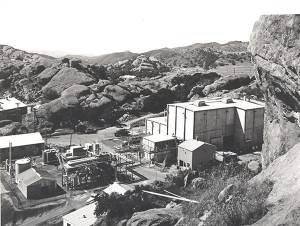The Rocketdyne Cleanup Coalition is proud of Teens Against Toxins Co-Founders Devyn Gortner and Robin Estrin who co-authored a poignant op-ed that was published in the LA Daily News on March 27, 2011
Region’s already suffered Fukushima-style accident
LA Daily News – March 27, 2011
The entire world watches, helpless and terrified, as Japan’s four nuclear reactors are abandoned. But for those of us who live just a few miles from the site of America’s first, and least-known, commercial nuclear meltdown, our reaction is tempered by familiarity and frustration.We know all too well what happens when fuel rods overheat. All our lives we’ve been living and playing near Strontium-90, Cesium-137, and Plutonium-239, a substance so deadly that inhaling only 1 millionth of an ounce causes cancer.
Nestled in the Simi hills near the San Fernando Valley, the Santa Susana Field Lab once housed an uncontained nuclear reactor that suffered a partial meltdown. The contamination resulting from the horrific accident that started on July 12, 1959, and the spills, toxic dumping and other environmental abuses that followed still have not been cleaned up.
The media has been comparing the Japanese nuclear accident with the famous meltdowns at Chernobyl and Three Mile Island. Those of us who live in the shadow of the Santa Susana Field Lab, and especially those of us who may have gotten ill from the disaster, hope to increase public awareness and pressure the three responsible parties – the Boeing Co., NASA and the Department of Energy – to clean up their toxic and radioactive mess.
While the two government agencies recently made strides toward complying with California’s stringent cleanup legislation, Boeing instead has initiated legal action, trying to overturn the state law. Last week the company’s lobbyists succeeded in pressuring state lawmakers to remove language from a budget-related bill that would have codified into law a Santa Susana cleanup agreement reached last December between state and federal agencies. Well over 99 percent of the thousands of public comments received by the state had favored the agreement.
“It’s ironic with what’s going on in Japan and potentially the worst nuclear meltdown in history, that we’re having such trouble getting this done,” said local Assemblywoman Julia Brownley, who co-authored the language attached to the budget-related bill.
How could Boeing engineer such political sleight of hand, while escaping intense scrutiny from America’s most prominent news organizations? The history of the field lab is rife with similar oversights, beginning with those surrounding the original accident.
During the Cold War era, the federal government had little desire to publicize the news that the Atomic Energy Commission was doing nuclear testing in the then-undeveloped area about 30 miles northwest of downtown Los Angeles. The AEC issued a press release five days after the meltdown stating, “During an inspection of fuel elements… a parted fuel rod was observed.”
No mention of nuclear. No mention of meltdown or radioactivity released. And consequently, no evacuations or pesky press coverage either.
An unforeseen event caused the meltdown, just as it did in Japan. The reactor here was an experimental one, which used sodium and a compound called tetralin to help cool the rods. When the tetralin accidentally leaked into the sodium, it began to clog the chambers through which the coolant passed, causing the rods to get too hot and melt.
According to Arjun Makhijani, president of the Institute for Energy and Environmental Research, the amount of radioactive iodine released here may have been 240 times greater than that released during Three Mile Island, in part due to the lack of a containment structure around the Santa Susana reactor.
We ask the America’s media to stop speculating about what would happen if there were a nuclear accident in California. There already was one, and we need your help to get it cleaned up.
Devyn Gortner and Robin Estrin, both age 16, are the founders of Teens Against Toxins, a group dedicated in part to raising awareness of the contamination at the Santa Susana Field Lab site and pressuring the responsible.

